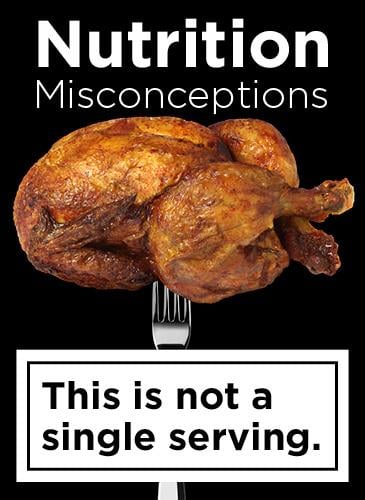The fight against diabetes and heart disease also means fighting nutritional misunderstandings and offering sound advice to patients. A new video helps dispel common misconceptions about the Nutrition Facts label found on food packages and offers physicians guidance on how to educate their patients.
Designed to help patients better understand what they are consuming and make more informed decisions about their daily diet, the Nutrition Facts label can be a powerful tool when used correctly.
A new video from the AMA and the U.S. Food and Drug Administration (FDA) offers tips to get started using the label and describes some of the most common misunderstandings:
- The % Daily Values do not add up vertically to 100 percent. Many patients are confused by the % Daily Value on the Nutrition Facts label. The video illustrates how physicians can discuss with patients the % Daily Value and clarify that it indicates how much of the daily recommended amount of a nutrient is found in one serving of that food.
- A 2,000 calorie daily diet should be used for general nutrition advice. Patients often overlook the fact that some of the daily values on the Nutrition Facts label are based on a 2,000 calorie daily diet, which is not necessarily how many calories each person should consume on a daily basis. Patients need to understand that the Daily Values may be higher or lower, depending on their calorie needs, which vary according to age, gender, height, weight and physical activity level.
- Small packaged foods aren’t necessarily a single serving. Many patients assume that small packages of foods—such as chips or bottled beverages—are a single serving. However, all of the nutrition information listed on the Nutrition Facts label is based on one serving of the food, even if a package contains more than one serving. Patients should always check the serving size and servings per container on the Nutrition Facts label to determine how many calories and nutrients they are consuming if they eat the entire package.
- All calories count. As a general rule, 400 calories per serving is high and 100 calories is moderate. Patients need to understand that “fat-free” doesn’t mean “calorie-free.” Some lower fat foods may have as many calories as the full-fat versions.
- Most dietary sodium doesn’t come from table salt. More than 75 percent of dietary sodium comes from packaged and restaurant foods, and many patients unwittingly eat far more than the recommended daily amount. Much of this comes from 10 common types of foods, including bread, cheese, deli foods, pizza, soup, savory snacks, and mixed pasta and meat dishes. In addition to sodium chloride (salt), sodium can come from ingredients such as saline, sodium benzoate, sodium bicarbonate (baking soda), sodium nitrite and monosodium glutamate (MSG). Physicians can illustrate for patients that the daily recommended amount for sodium amounts to less than a teaspoon of salt.
New resources
The video is 30 minutes long and offers continuing medical education credit through the AMA Education Center. It shows how physicians can turn office visits into teachable moments—helping patients track individual nutrients, compare foods and make choices armed with a stronger understanding of the Nutrition Facts label.
“One of the simplest ways patients can make healthier food choices is referencing the Nutrition Facts label,” AMA President Andrew W. Gurman, MD, said in a news release. “This new video showcases different strategies that physicians can easily incorporate into their work flow to help guide patients on making better food choices that will have a lasting, positive impact on their health outcomes.”
In addition to the video, the AMA and FDA teamed up to offer patient handouts on understanding the Nutrition Facts label and key nutrients for health.
The AMA has made the fight against chronic disease a priority through its Improving Health Outcomes initiative, which seeks to prevent heart disease and type 2 diabetes. These two diseases affect millions of Americans and cost the economy hundreds of billions of dollars. The AMA works with allied organizations to reduce risk factors and improve treatment. The new Nutrition Facts label is one element of the campaign to reduce risk factors by improving patients’ diets.
Continuing a collaboration
The new version of the Nutrition Facts label, announced in May, will reflect the latest scientific research to help consumers maintain healthy diets. The AMA and the FDA will continue working together to provide education for physicians on all aspects of the Nutrition Facts label, emphasizing the changes and improvements that will come in the years ahead.




